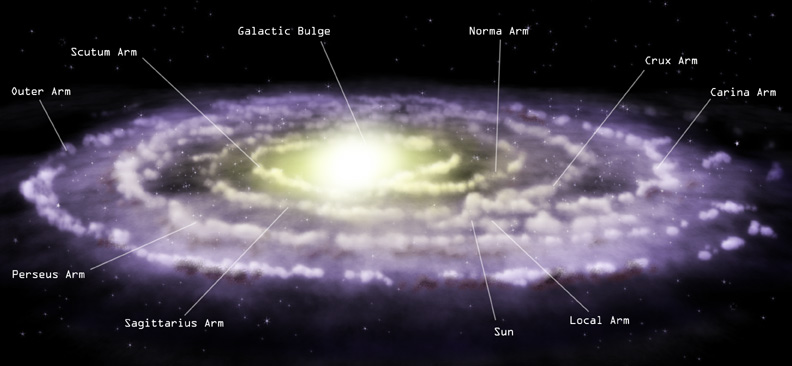Getting a Sense of Place in our Universe
The biggest science news this week, by far, has been a new study suggesting that Earth-sized planets in habitable zones may be very common. This is exciting news – who wouldn't want to have more cosmic planetary friends out there that maybe one day we'll be able to explore? By the latest accounts, there could be billions of Earth-like planets out there in our Milky Way galaxy.

While this is indeed mind-boggling, it got us thinking about the sheer vastness and the enormous scale of the Universe that we can explore using modern telescopes. We live in one galaxy - the Milky Way - that astronomers estimate contains roughly 400 billion stars. The Earth is not in a particularly special place in this giant collection of stars. We're about two-thirds away from the center in one of the spiral arms, in the galactic suburbs, so to speak.
What's happening in the downtown where the supermassive black hole lies and the density of stars is much higher? Chandra and other telescopes have been looking to see. We've learned an incredible amount about this area over the years with Chandra including:
- How the black hole behaves,
- What it likes to eat,
- And even what it has done hundreds of years before we had the technology to observe it.
It's very humbling to consider our small place in the very big Galaxy. It's even more so when we think about our Galaxy being just one of billions of galaxies (each of which has its own billions of stars and probably planets). Most of these galaxies aren't alone in space. Rather, they belong to groups or clusters of galaxies that are bound together by gravity. Chandra has done some amazing work studying these collections of galaxies since most of them are filled with hot gas that emits X-rays. It's hard to summarize all that the mission has done in this area of astrophysics, but a decent snapshot can be found by perusing the images we've released on the subject.
And just when you think you've wrapped your head around what the cosmos has to offer, we have to throw in the mysteries of dark energy and dark matter that account for 96% of the Universe. That's right, all of the stuff we can see with telescopes - planets, stars, galaxies, clusters - account for a mere tiny fraction of what is out there in the Universe. So take a few minutes to enjoy the incredible work Kepler is doing in discovering planets in our Galaxy, and then maybe take another one to consider how much we still have yet to explore.
-Megan Watzke, CXC
Please note this is a moderated blog. No pornography, spam, profanity or discriminatory remarks are allowed. No personal attacks are allowed. Users should stay on topic to keep it relevant for the readers.
Read the privacy statement
